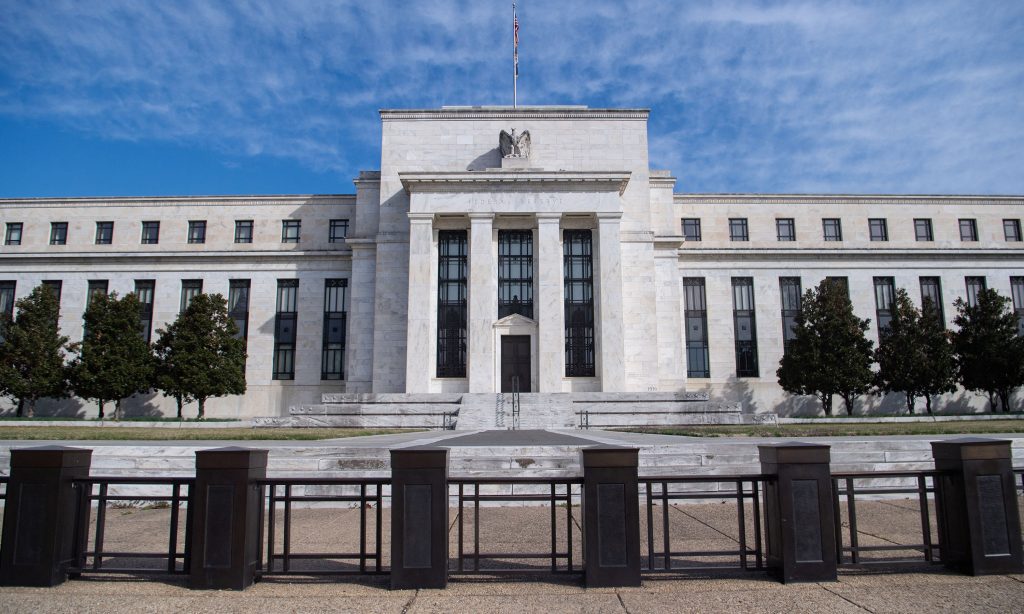Molly Smith | (TNS) Bloomberg News
New information on inflation and unemployment benefit applications has given Federal Reserve officials more reasons to wait before reducing interest rates, even though retail sales indicated a slowdown in consumer spending.
Reports on Thursday showed that prices paid to U.S. producers were higher than expected in February, and there were fewer applications for and recipients of jobless benefits than previously estimated. This follows earlier data in the week that indicated consumer prices also rose quickly last month.
Although a report indicated weaker consumer spending at the start of the year, the strength in inflation and labor data supports policymakers’ opinion that they need to see more progress before lowering borrowing costs. Fed officials, who are responsible for maintaining stable prices and maximum employment, are widely anticipated to keep rates at a two-decade high for a fifth month at the upcoming meeting.
Chris Low and Mark Streiber from FHN Financial stated that when the Fed is considering a series of rate cuts and is faced with suddenly slower economic growth and faster inflation, they will always respond to the new information on the inflation side. As long as wholesale inflation remains stable or increases and retail inflationary pressures continue, the Fed's pause will continue.
Inflation has been mainly decreasing over the past year, primarily due to falling prices for goods and energy. However, the latest consumer and producer price indexes from the Bureau of Labor Statistics indicate that progress is stalling, or possibly even reversing.
Core consumer goods prices, which do not include food and energy prices, increased for the first time since May, while a similar measure at the wholesale level showed the largest back-to-back increase in a year. Increasing energy costs were a major factor in the high readings in both the headline CPI and PPI, which were also higher than expected in January.
The prices of used cars and clothing both rose last month after falling in January.
Important components from the CPI and PPI readings used to calculate the personal consumption expenditures price index — the Fed’s preferred inflation metric — suggest that the February PCE will be strong again when released later this month, following a robust January print.
Ian Shepherdson, chief economist at Pantheon Macroeconomics, predicts that the core PCE will increase by 0.4% when rounded, which would be similar to January’s figure. Other forecasters, such as those at Barclays Plc and Bank of America Corp., expect the February number to soften slightly to around 0.3% — this would still be the strongest consecutive increase in a year.
Shepherdson has revised his forecast for a rate cut to June based on the PPI report. Treasury yields increased and the dollar strengthened after the data, while the S&P 500 fell as traders predicted that rates would stay higher for longer.
Stephen Stanley, chief U.S. economist at Santander U.S. Capital Markets LLC, believes that the Fed will keep rates unchanged for much longer than other economists — until November.
Stanley mentioned in a note that six weeks ago the FOMC was looking for 'greater confidence' in inflation moving back to 2%, but since then, there has been only bad news on the inflation front.
The Fed will likely choose to continue pausing for a longer time because of the strong labor market. Requests for U.S. unemployment insurance were lower than initially reported over the past year after revisions, especially for people who were already receiving benefits.
A representation of those people, called continuing claims, was significantly revised downward at the end of February, as well as at the end of 2023. Initial jobless claims were also adjusted, but not as much, according to Labor Department data.
Despite recent strong inflation and jobs data fueling a narrative of the economy reaccelerating, the retail sales data contradicts that idea. The value of retail purchases, not adjusted for inflation, increased less than expected in February after downward revisions to the previous two months.
The so-called control-group sales, used to calculate gross domestic product, did not change in February after falling in the previous month. This measure, excluding food services, auto dealers, building materials stores, and gasoline stations, indicates weaker economic activity in the first quarter.
Morgan Stanley economists, led by Ellen Zentner, stated in a report that the retail sales report this month supports their view of the economy being strong but cooling. They see no reason for the Fed to rush the next rate move.
(With help from Christopher Condon, Jarrell Dillard and Augusta Saraiva.)
___
©2024 Bloomberg L.P. Visit bloomberg.com. Distributed by Tribune Content Agency, LLC.









